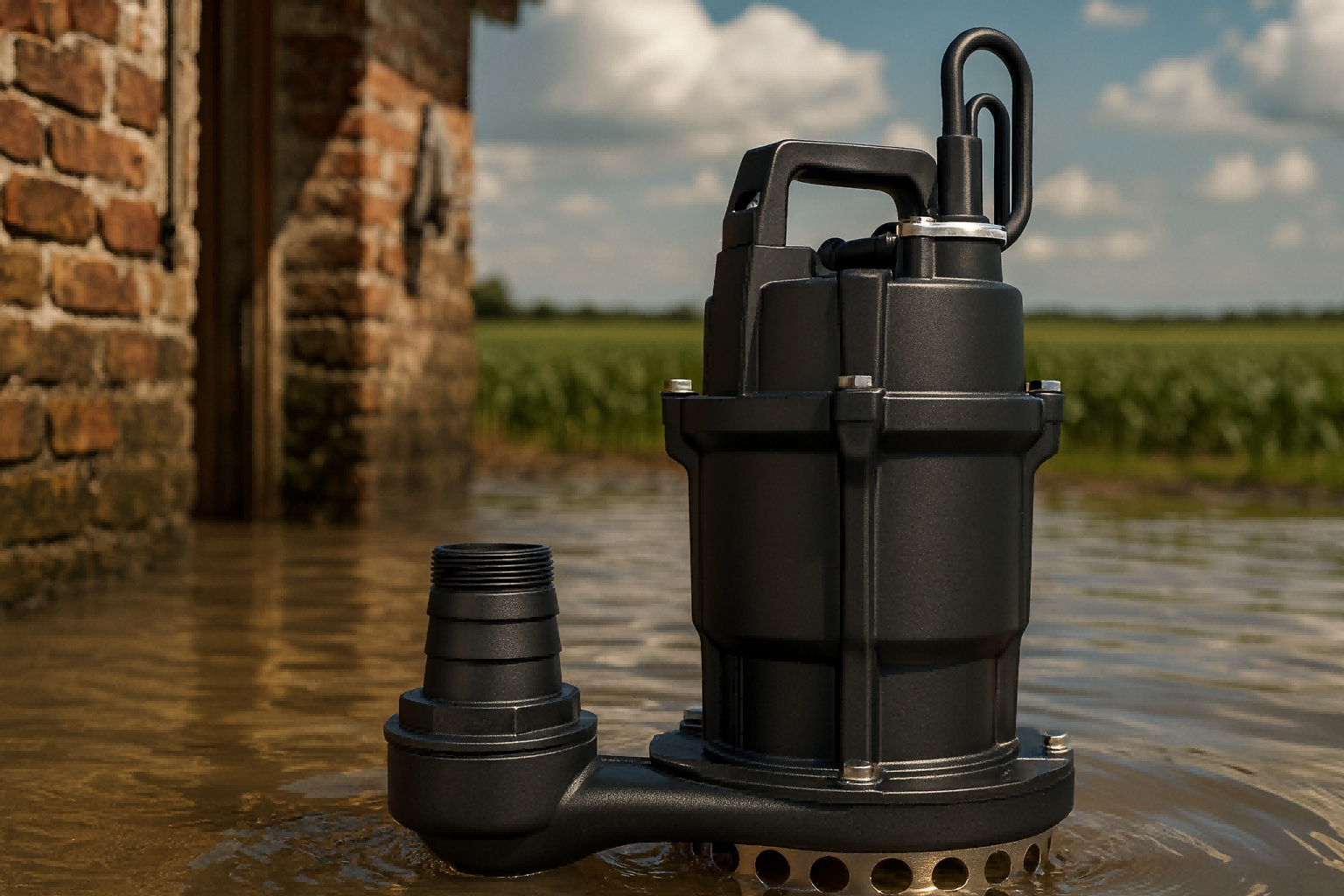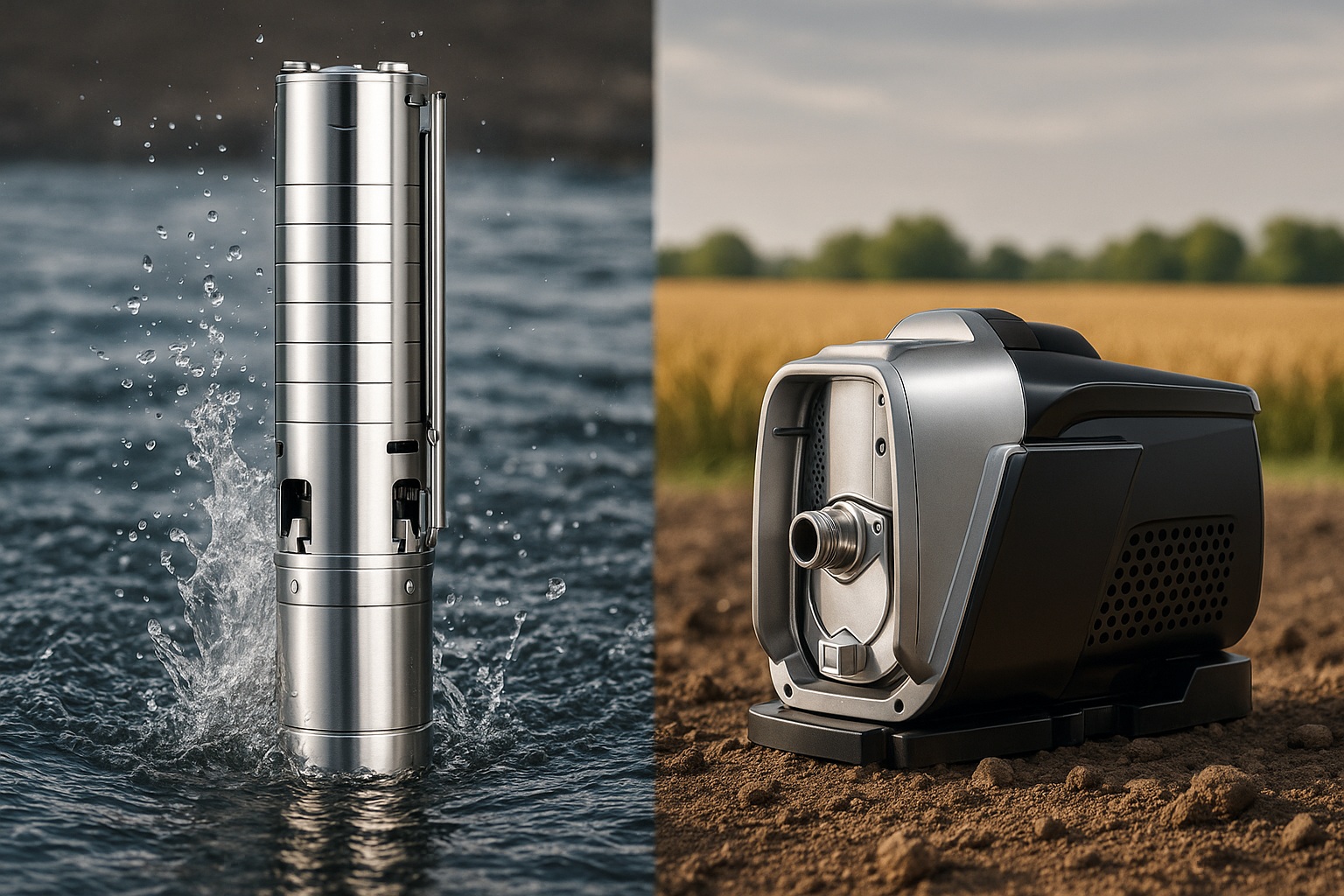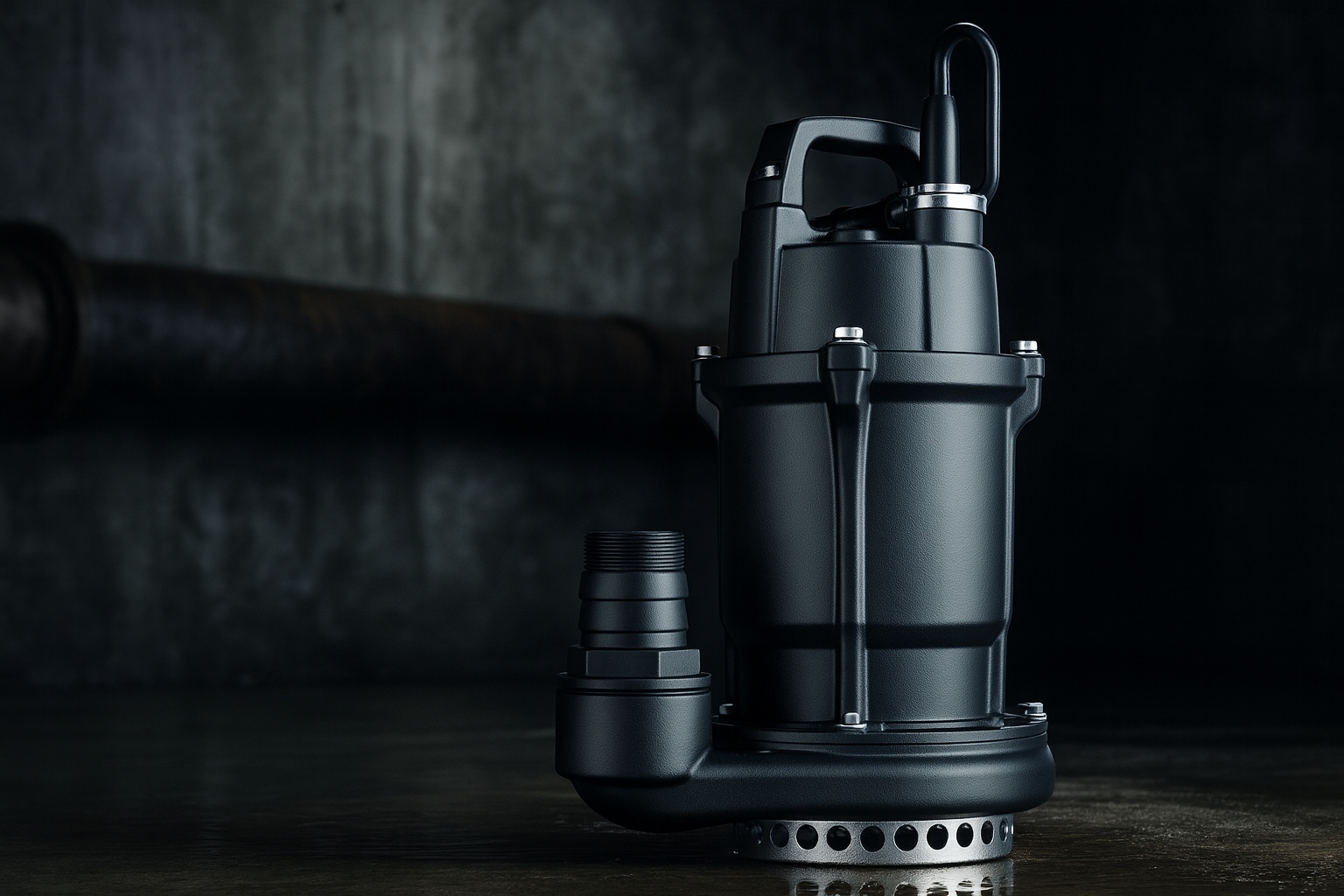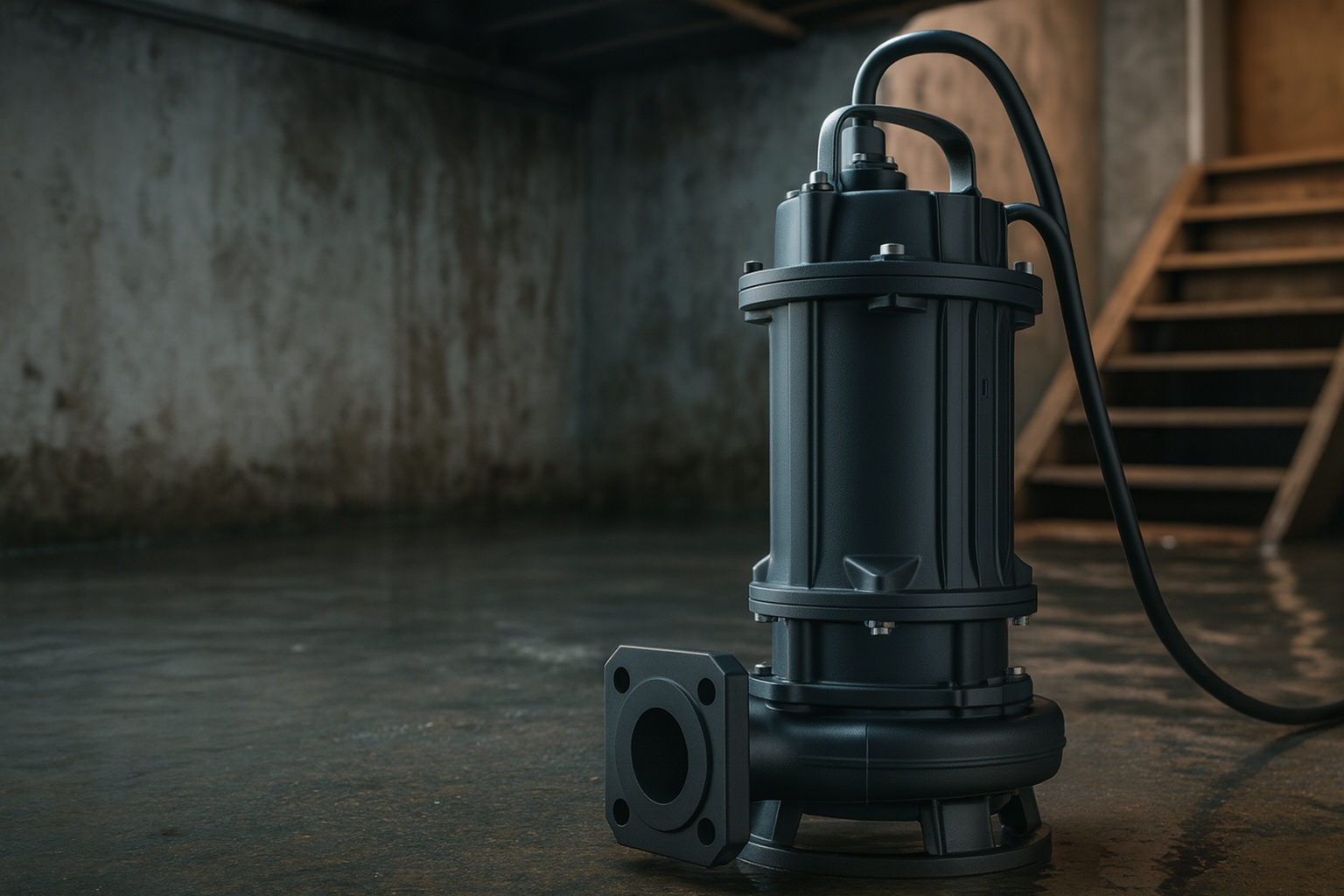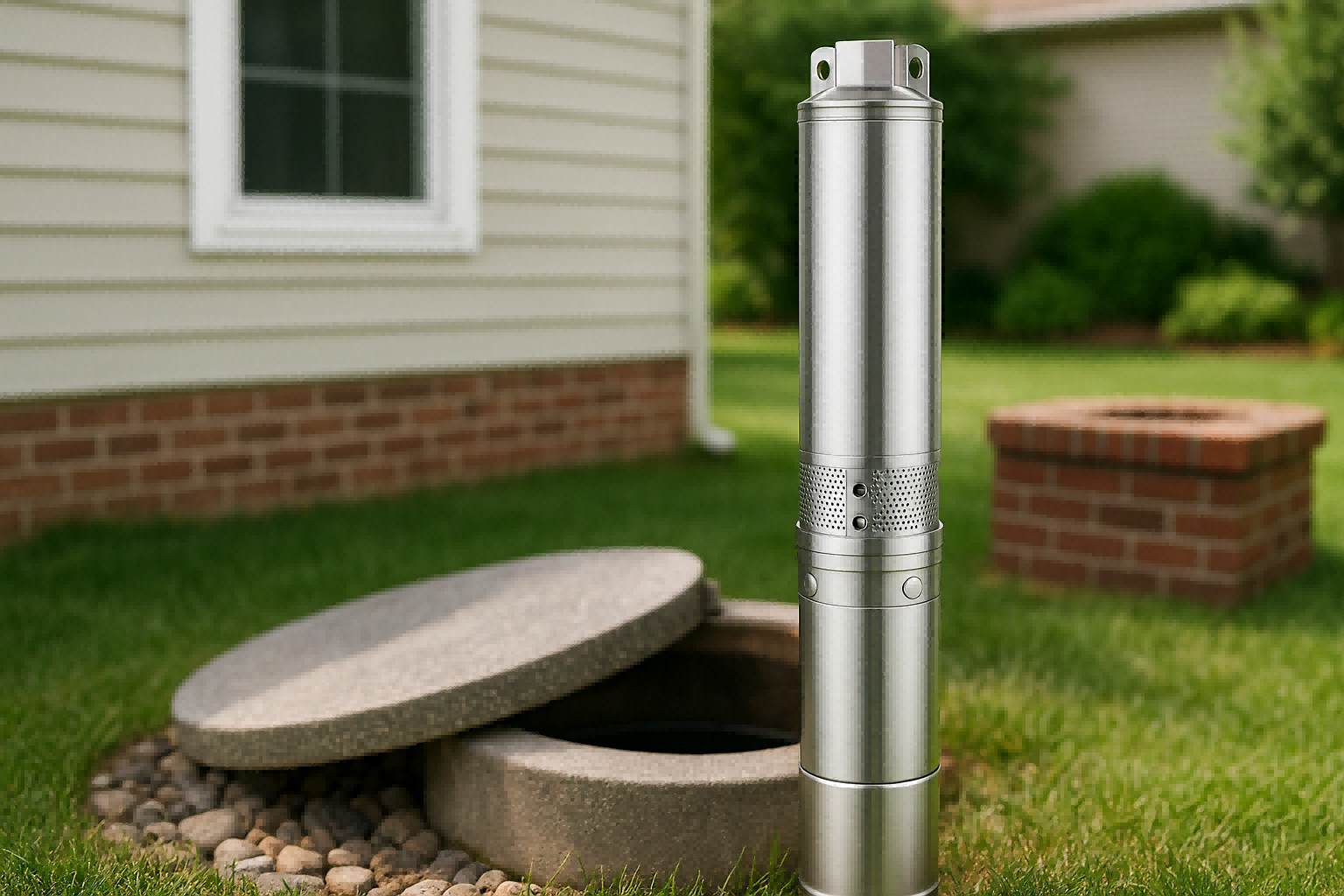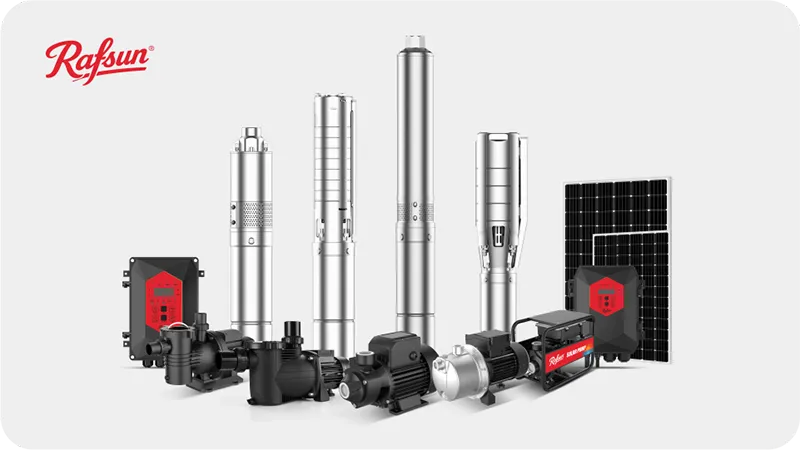Struggling with fluctuating water pressure? Wasting money on high energy bills from your old pump? A VSD booster pump is the simple, modern solution you have been looking for.
A VSD (Variable Speed Drive) booster pump is a smart water pump system. It automatically adjusts its motor speed to maintain constant water pressure, saving significant energy compared to traditional fixed-speed pumps. It provides comfort for users and savings for owners.

It sounds simple, but the technology behind it is very effective. Understanding how it works can help you see why it's a game-changer for so many of my clients, from residential complexes to large industrial facilities. Let's break it down further so you can see the real benefits.
What does VSD mean?
Confused by pump jargon like VSD? This technical term can seem complex. But understanding it is the key to unlocking huge savings and better performance for your customers' projects.
VSD stands for Variable Speed Drive. It is an electronic device that controls the speed of an electric motor. By changing the motor's speed, it can precisely match what the system needs, like keeping water pressure constant.
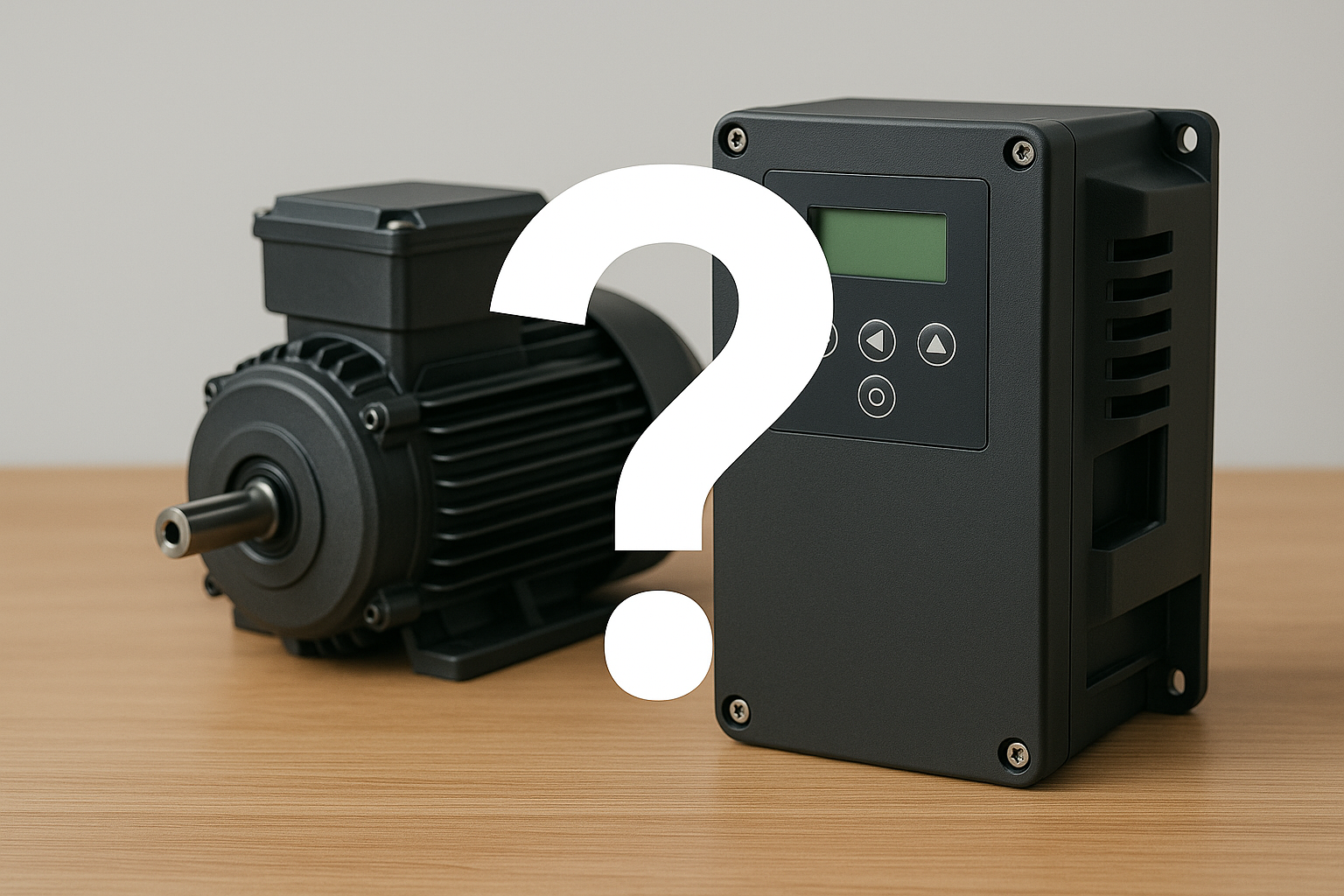
A VSD is not the pump itself, but the controller that manages the pump's electric motor. You can think of it like a dimmer switch for a light bulb, but for a powerful motor. Instead of being just on or off, it can run at any speed needed. It works in a few steps. It takes the standard AC power, converts it to DC power, and then uses a part called an inverter to create a new AC power signal at the frequency it wants. This new frequency directly controls the motor's speed. This precise control is what makes the whole system so efficient and responsive to changing water demands. For my clients, explaining this simple control concept makes the value proposition very clear.
VSD vs. Fixed Speed
| Feature | Fixed-Speed Motor | VSD-Controlled Motor |
|---|---|---|
| Speed | Runs at one constant speed | Speed adjusts to demand |
| Energy Use | High, always at max power | Low, uses only needed power |
| Control | Simple on/off | Precise, responsive control |
| Wear & Tear | High due to sudden starts | Reduced, soft starts/stops |
What is VSD in a pump?
Do you see "VSD" on a pump spec sheet but are not sure what it does? This feature can seem like just another buzzword. But it's the core of modern, efficient water systems.
In a pump, VSD means the pump has an integrated controller that adjusts its speed. This allows it to deliver the exact amount of water needed to maintain a set pressure. This stops the pressure changes and energy waste of standard pumps.
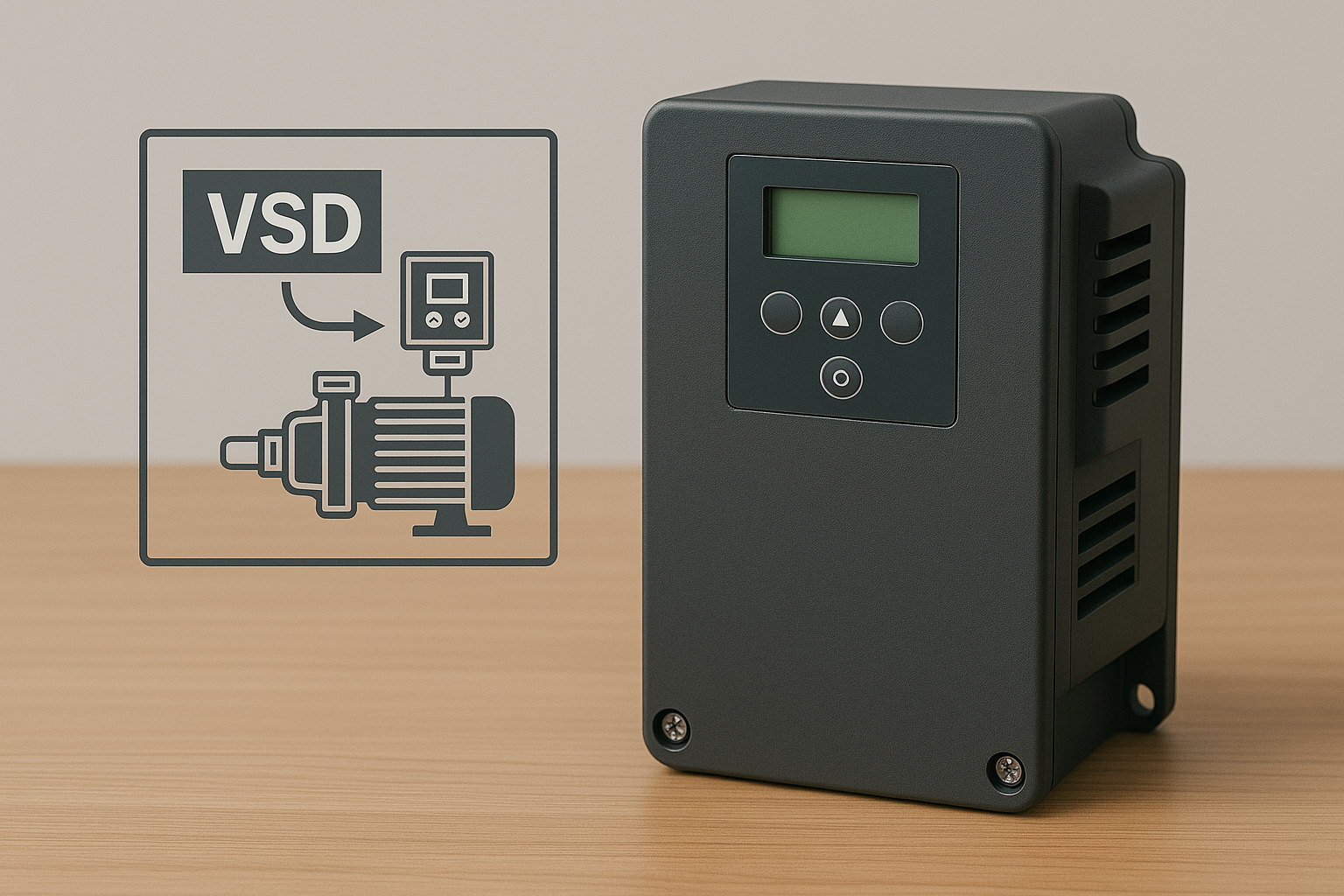
When we apply VSD technology to a pump, it becomes a "smart" pump. A pressure sensor in the water line sends signals to the VSD controller. Let's say your customer wants the water pressure set to 3 bar. The system then works to maintain that pressure perfectly.
The Smart Response to Water Demand
- Low Demand: If someone opens one faucet, the pressure starts to drop a little. The sensor detects this. The VSD tells the pump motor to speed up just enough to bring the pressure back to 3 bar.
- High Demand: If multiple showers and faucets are running, the pressure drops more quickly. The VSD responds by running the motor at a much higher speed. It does this to meet the high demand and keep the pressure constant at 3 bar.
This intelligent system ensures comfort for the end-users. It also creates huge operational savings for building managers. It's not just about saving energy. It's about providing a better, more reliable water supply that people can count on. This is a major selling point for my distributors.
How efficient is a VSD motor?
Are the energy costs for your water systems getting out of control? Traditional pumps run at full power all the time, and this wastes a lot of electricity. There is a much more efficient way.
A VSD motor is highly efficient because it only uses the energy required for the immediate task. By matching motor speed to real-time demand, VSD systems can reduce a pump's electricity consumption by up to 50% or even more.
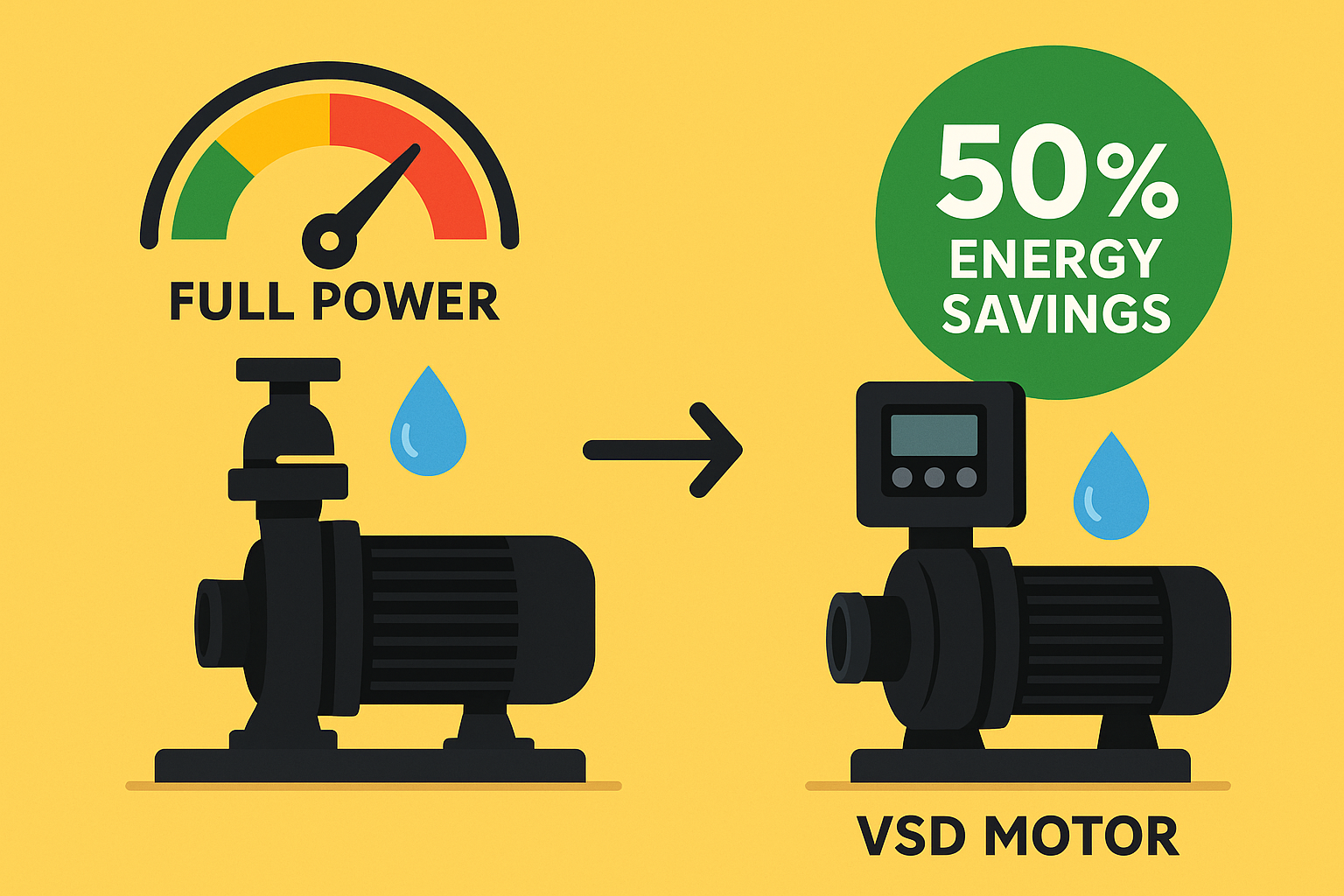
The energy savings are not just small adjustments; they are very big. This is because of a principle in physics called the Pump Affinity Laws. In simple terms, the link between a pump's speed and its power use isn't straight. The law states that the power needed is proportional to the cube of the speed. This is a very powerful concept.
The Power of Pump Laws
Let me give you a simple example that I often share with clients like Leon in South Africa.
- If you reduce the pump's speed by just 20% (running it at 80% speed), the power needed drops to about 51% of the original.
- That’s a nearly 50% energy saving from a small reduction in speed.
For my clients, this is the most important factor. The initial cost of a VSD pump is higher, but the payback period from energy savings is often very short, usually 1-2 years. It is a smart investment that keeps delivering returns for years.
What is the difference between a VSD pump and a VFD pump?
Are you hearing VSD and VFD used for pumps and feeling confused? These acronyms sound similar and are often used together. Let's clear up the confusion and explain the key details.
There is no real difference in function. VSD (Variable Speed Drive) and VFD (Variable Frequency Drive) refer to the same technology. VFD is more technical, saying how speed is controlled. VSD says what it does.
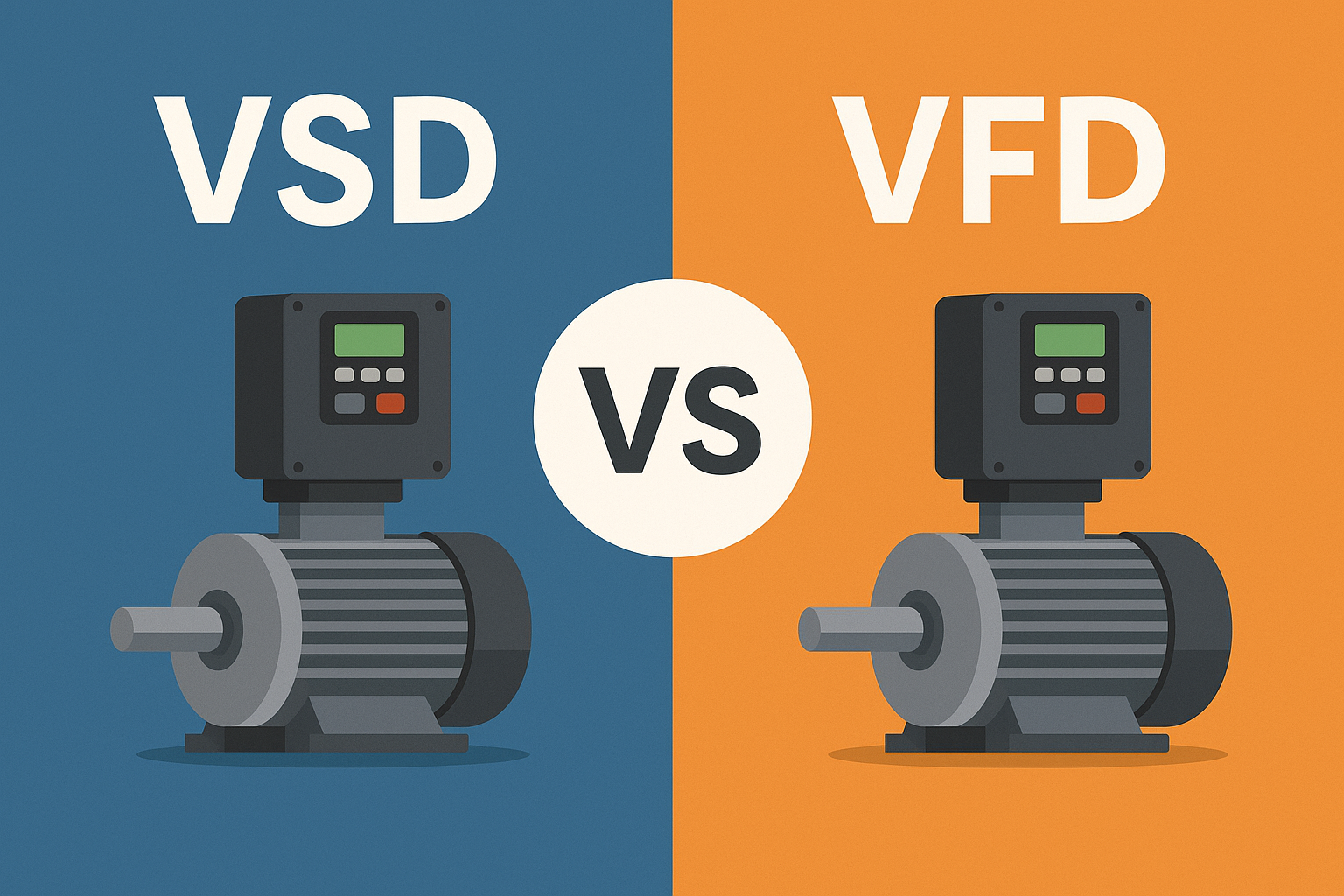
In my decade of experience in this industry, I've seen both terms used all the time. It can be confusing at first, but the reality is simple: they mean the same thing for pumps.
Two Names, One Technology
- Variable Frequency Drive (VFD): This is the more technical name. It correctly describes the method the controller uses. It changes the electrical frequency to change the motor's speed. Engineers often prefer this term.
- Variable Speed Drive (VSD): This is a more general, functional name. It describes the result of the technology. It gives the motor a variable speed. This is easier for most people to understand.
So, when you see a supplier listing a VFD pump or a VSD pump, you are looking at the same advanced technology. As a buyer, you do not need to worry about the difference. You should focus on the performance specifications, the quality of the parts, and the support from the manufacturer. At RAFSUN, we call them VSD pumps. We do this because it clearly communicates the main benefit to our customers: variable speed for constant pressure and savings.
Conclusion
In short, a VSD booster pump is a smart, energy-saving solution. It provides constant water pressure and lowers operating costs, making it a better choice for modern buildings.


